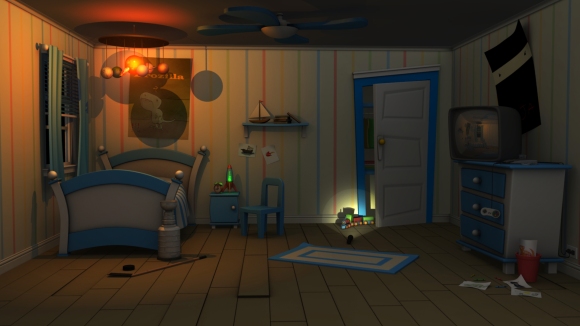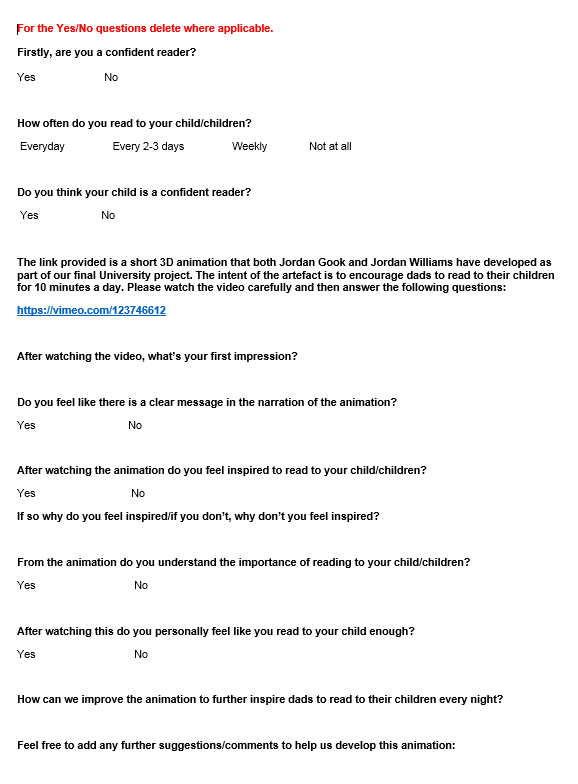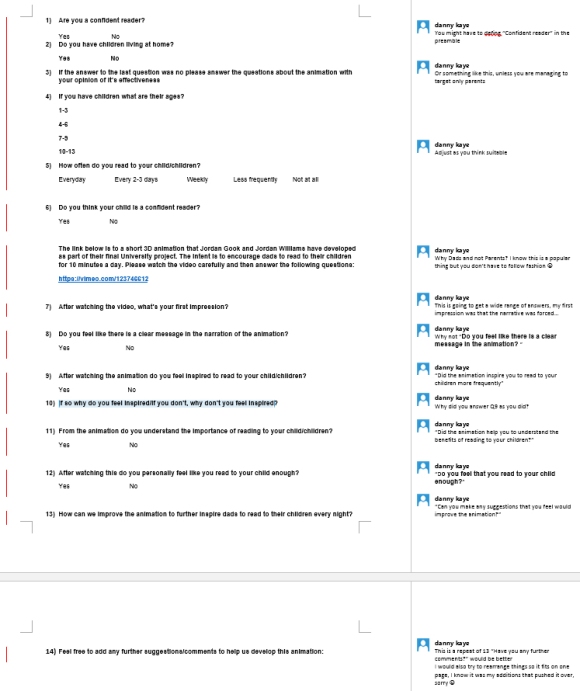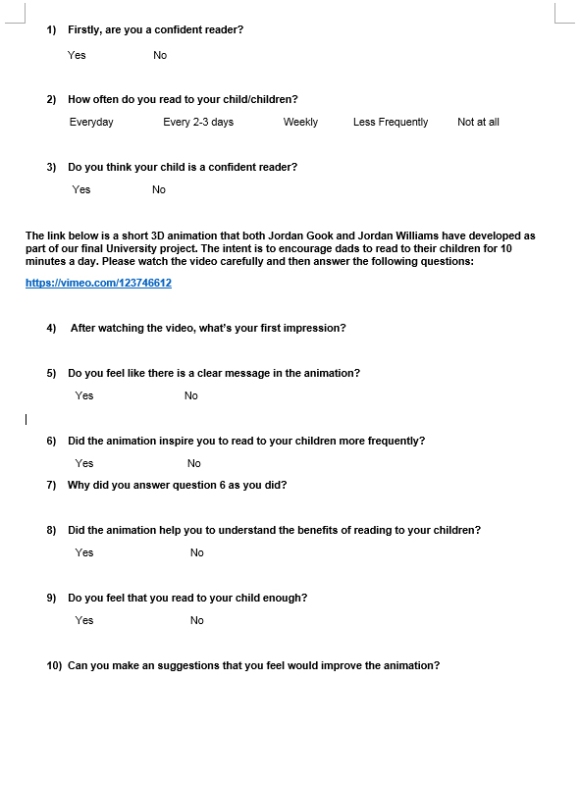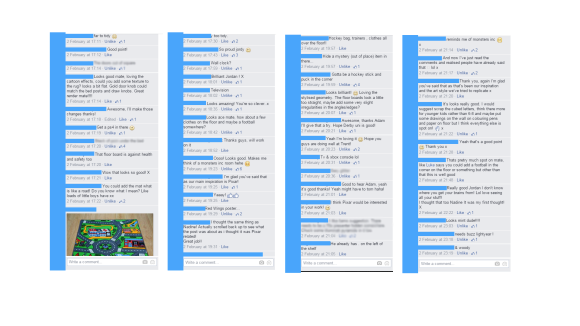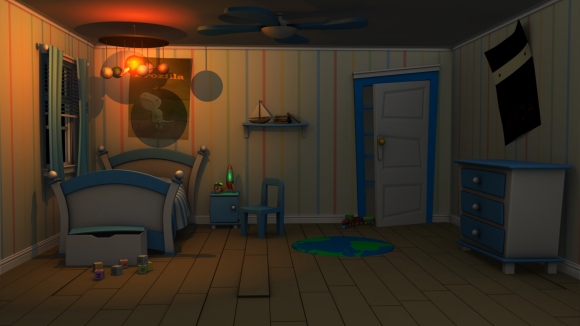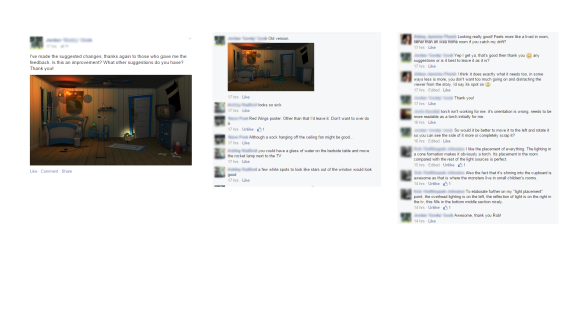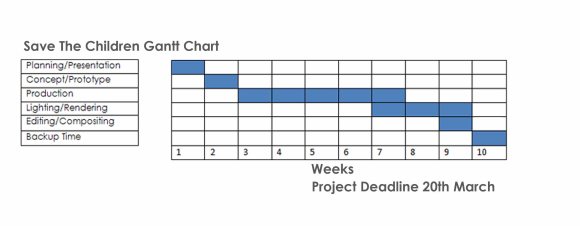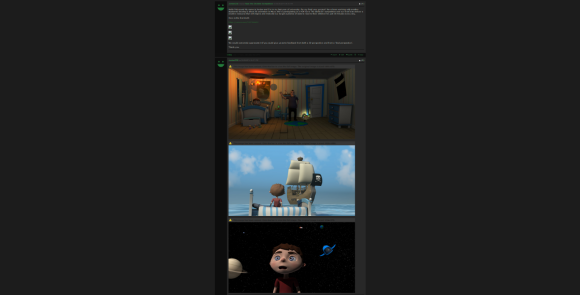Since sending out the questionnaire we have had 6 dads that have completed the questionnaire, this is a bit disappointing considering we had approached 15 dads. However quality is better than quantity and we’ve had some positive comments along with some constructive criticism. To keep this organised we’ve numbered each respondent and picked out the key questions and answers that will help us understand why they were or were not inspired by the animation.
The questions that we’ve picked out are:
Did the animation inspire you to read to your children more frequently?
Why did you answer question 6 (the above question) as you did?
Can you make any suggestions that you feel would improve the animation?
Here are the answers we have received:
Respondent 1:
Did the animation inspire you to read to your children more frequently?
NO
Why did you answer question 6 (the above question) as you did?
I really like the concept but I think the connection between the father and son wasn’t strong enough. A bit more footage of them reading together and the son interacting, maybe pointing things out on the page or joining in with the reading would be good. You could have the father start to read and then the child pick up the story before it goes into the visual stuff. At the end, as a father, I would want my child to give me a hug and say goodnight following a story, maybe with a ‘thank you for taking me on that adventure Daddy’ type thing would be good.
Can you make any suggestions that you feel would improve the animation?
I think if you showed the Dad and Child picking up the story together and then maybe transport them both onto the pirate ship so they are both part of the story and the Dad has an investment in what happens, maybe helping each other as they go along through the adventures. If you want Dads to spend more time with their kids, you need to show that in the video. ‘Reading to your kids takes you on the adventure with them’ is a good message to give. I sometimes get my kids to tell me a story out of their head with no book and the things that come out of their imagination are amazing, but that’s because I’m normally part of the story rather than just watching a story being read. I realise you probably only have a small amount of time for the video so may not be able to incorporate all these thoughts but the Dad being part of the adventure and a good, happy closure is key for me. You don’t want your child having nightmares about being made to walk the plank at sword point.
Respondent 2:
Did the animation inspire you to read to your children more frequently?
YES
Why did you answer question 6 (the above question) as you did?
I already read nightly, but if I didn’t, I believe I would feel more inspired to read more.
Can you make any suggestions that you feel would improve the animation?
I think the voice over was too long, I felt like it didn’t need to give that amount of information. Also I think it needed a bit more character.
Respondent 3:
Did the animation inspire you to read to your children more frequently?
YES
Why did you answer question 6 (the above question) as you did?
*No response*
Can you make any suggestions that you feel would improve the animation?
Could you do more than one video?, but shorter…I would do a series of videos, a different book and a different adventure. Then you could also do stories for girls as well.
Respondent 4:
Did the animation inspire you to read to your children more frequently?
YES
Why did you answer question 6 (the above question) as you did?
*No response*
Can you make any suggestions that you feel would improve the animation?
Well thought after design with a very clear, strong message.
Respondent 5:
Did the animation inspire you to read to your children more frequently?
YES
Why did you answer question 6 (the above question) as you did?
The video reminds us that children can actively imagine and put themselves into scenarios and stories in a way adults have probably forgotten to do (or don’t do often enough). Adults tend to read and enjoy a story as a ‘reader’ or third person – Children immerse themselves much more into the story.
Can you make any suggestions that you feel would improve the animation?
Raise the music levels, and perhaps introduce a little more ‘dramatic’ effect in the voiceover and sound effects
Respondent 6:
Did the animation inspire you to read to your children more frequently?
YES
Why did you answer question 6 (the above question) as you did?
*No response*
Can you make any suggestions that you feel would improve the animation?
During second adventure there perhaps needs to be more interaction between the father and son to reinforce the message of doing things together. The narration lacks a little sense of fun during the fight with the pirates. Perhaps needs a slightly quicker tempo.
You can view each of the respondents answers in more detail here:
1.SavetheChildrenQuestionnaire 2.SavetheChildrenQuestionnaire 3.SaveTheChildrenQuestionnaire 4.SavetheChildrenQuestionnaire 5.SavetheChildrenQuestionnaire 6.SavetheChildrenQuestionnaire
Action Plan From Results
The feedback we received was really positive, but we also received suggestions that are really good ideas,
The main points were:
– More interaction between father and son
– More Dramatic voice over/ voice over lasted too long
– Multiple short videos with different stories
So now that we have these results and have found out what our users actually think about our project, and have a list of what they advised we change, we need to decide what we can change, in the little time we have left. We can edit the voice over and take pieces out to shorten it, recording a new voice may be possible, either mine or Jordans dad may have to do it, as we haven’t got time to arrange an actor. We can edit the video to create two smaller ones to see how they feel as an experiment. Having more interaction between the boy and his father may be a bit tricky as re animating a scene in a week is a near impossible task so will have to be left out for now.
Here is our action plan for this week running up to the hand in:
– Edit the current Voice over
– Edit two shorter videos with separate stories
– Record a fresh voice over, with a more mature and exciting voice.

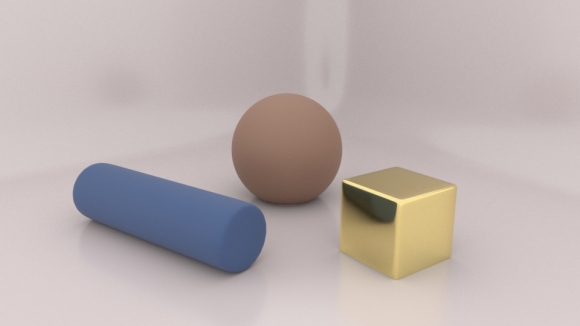
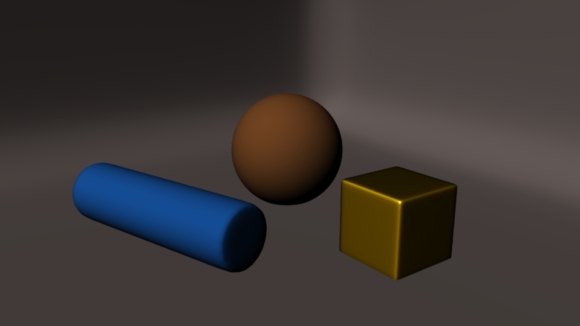



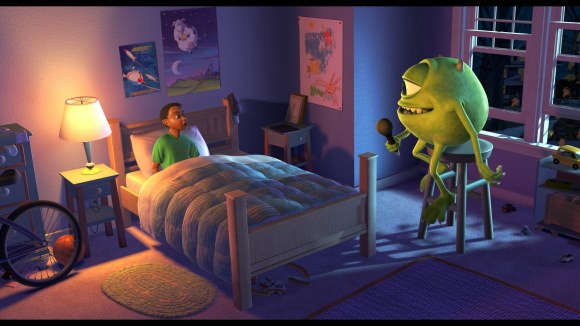 (
(

